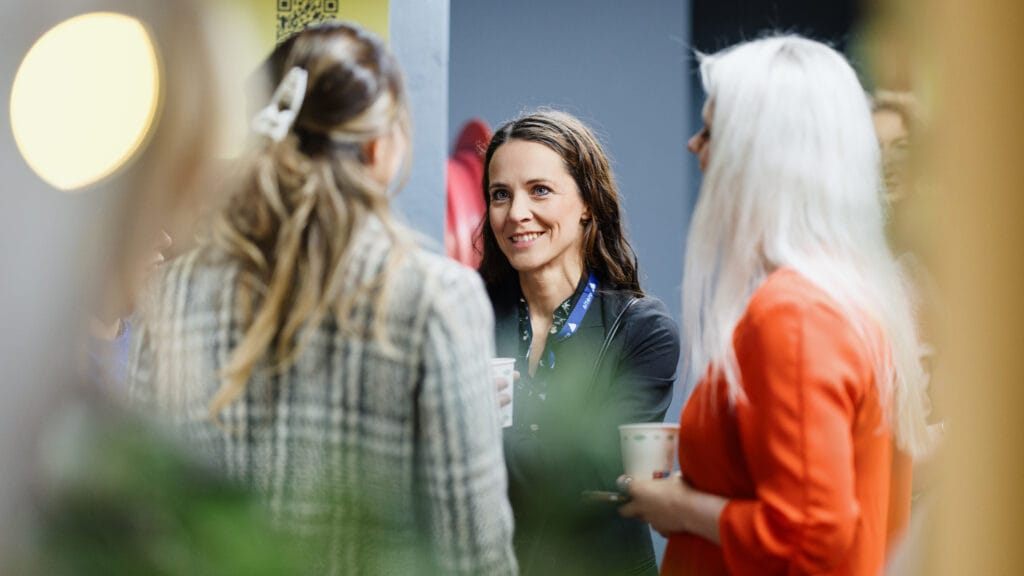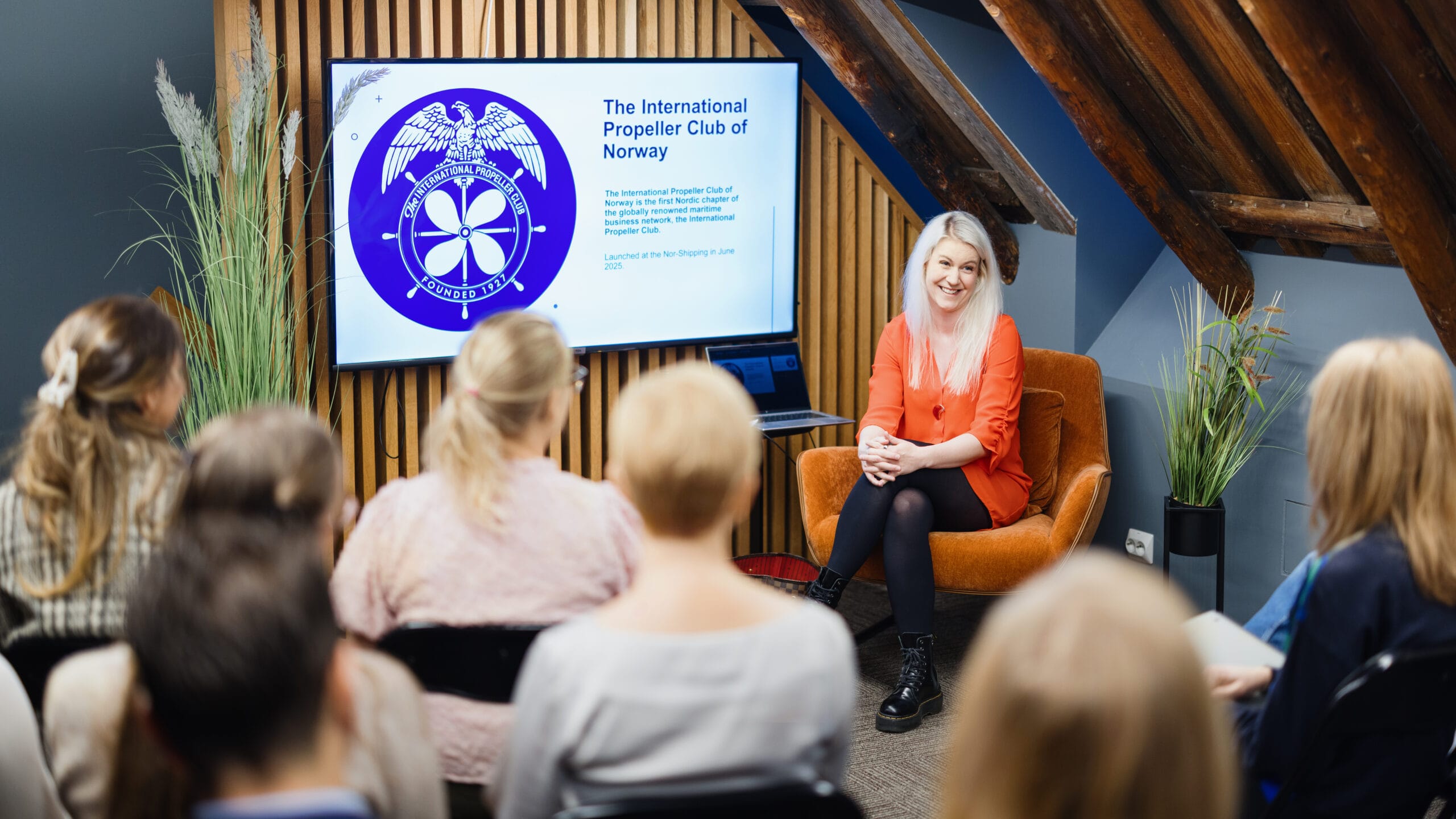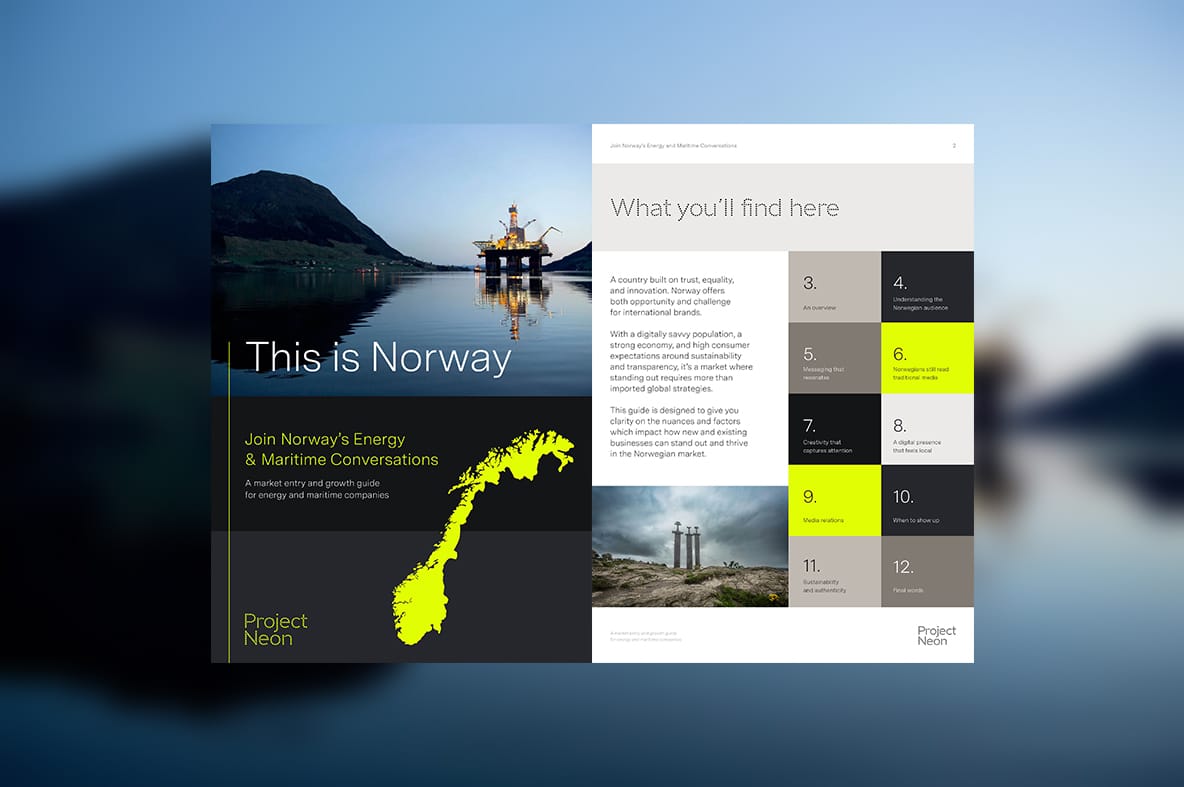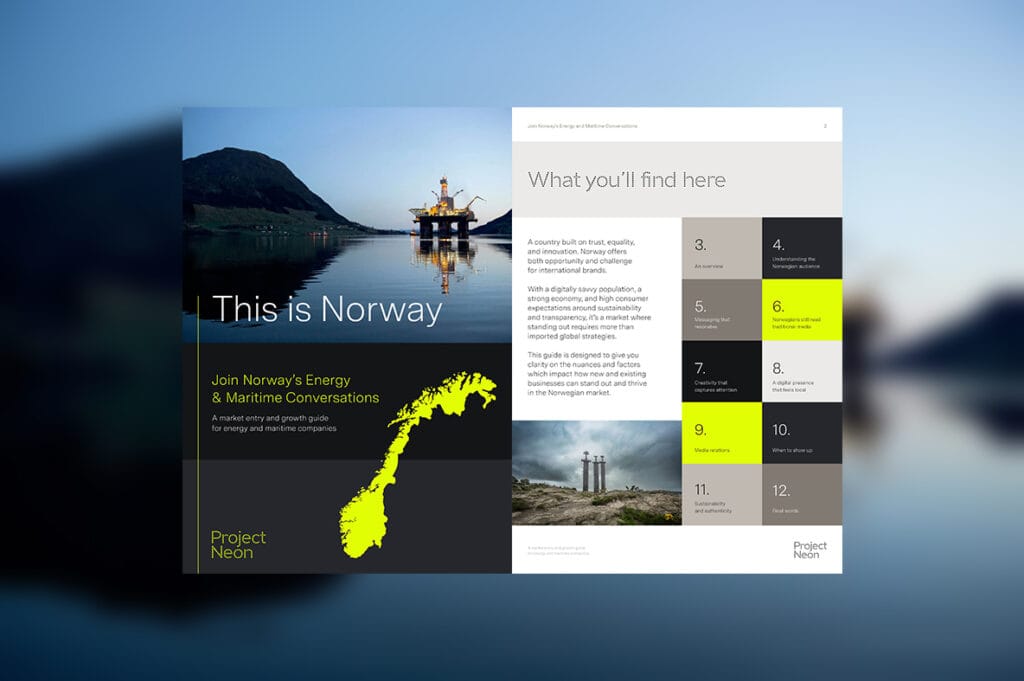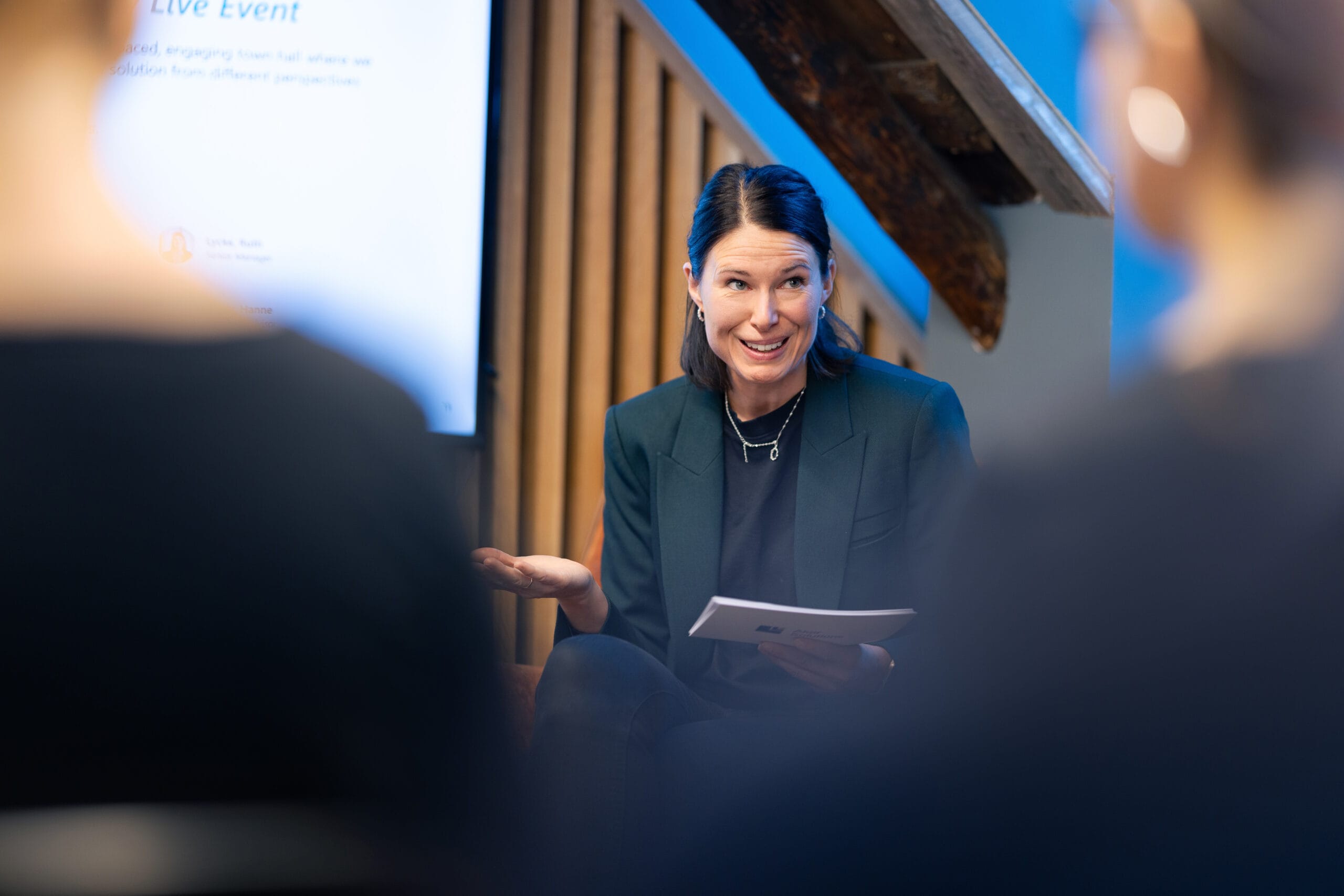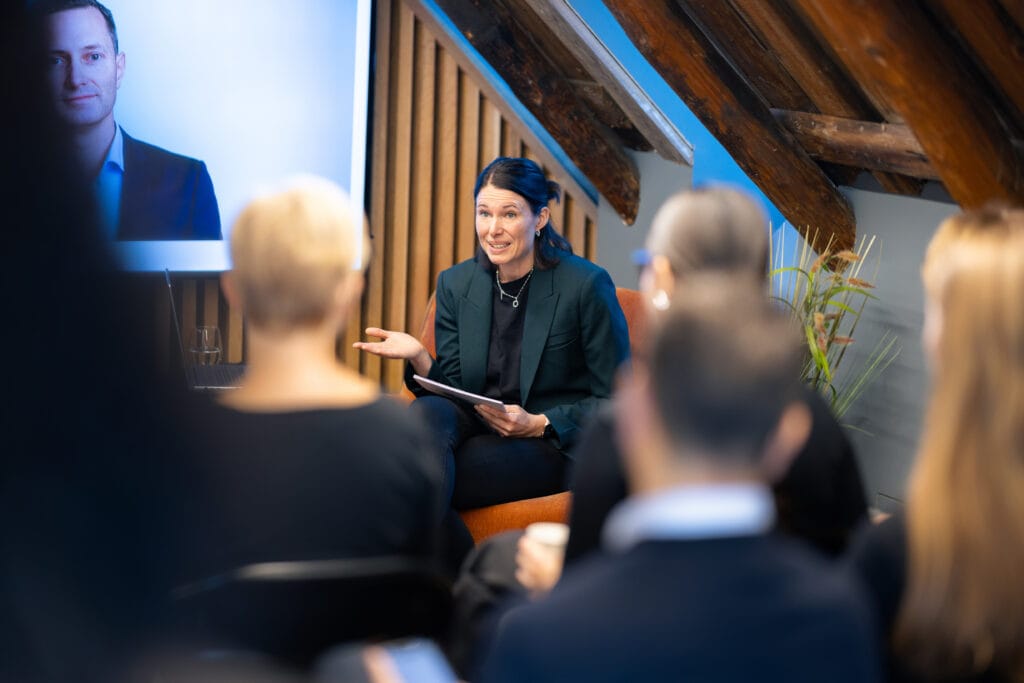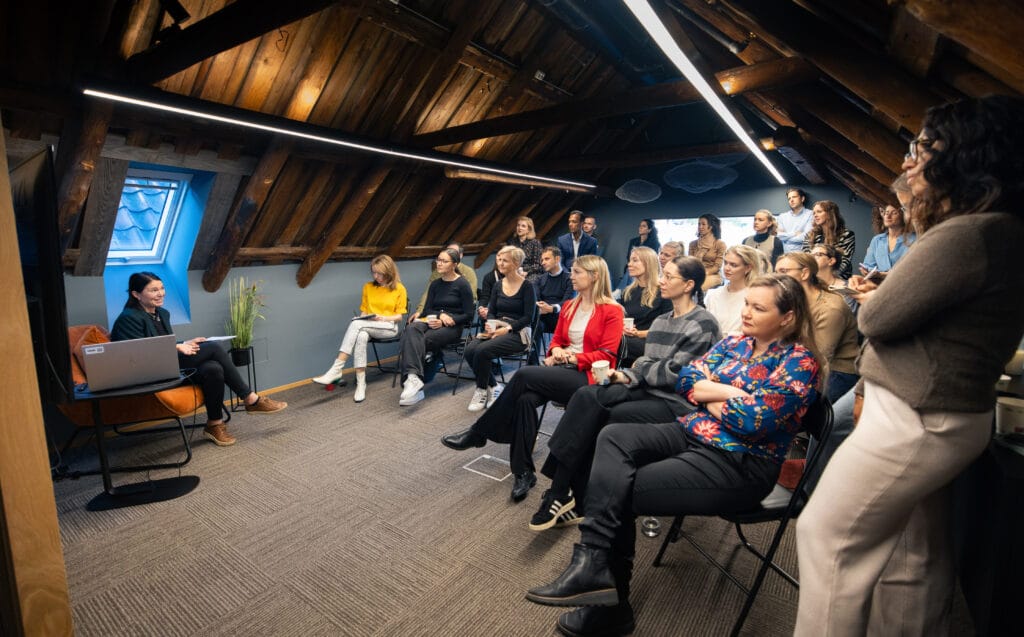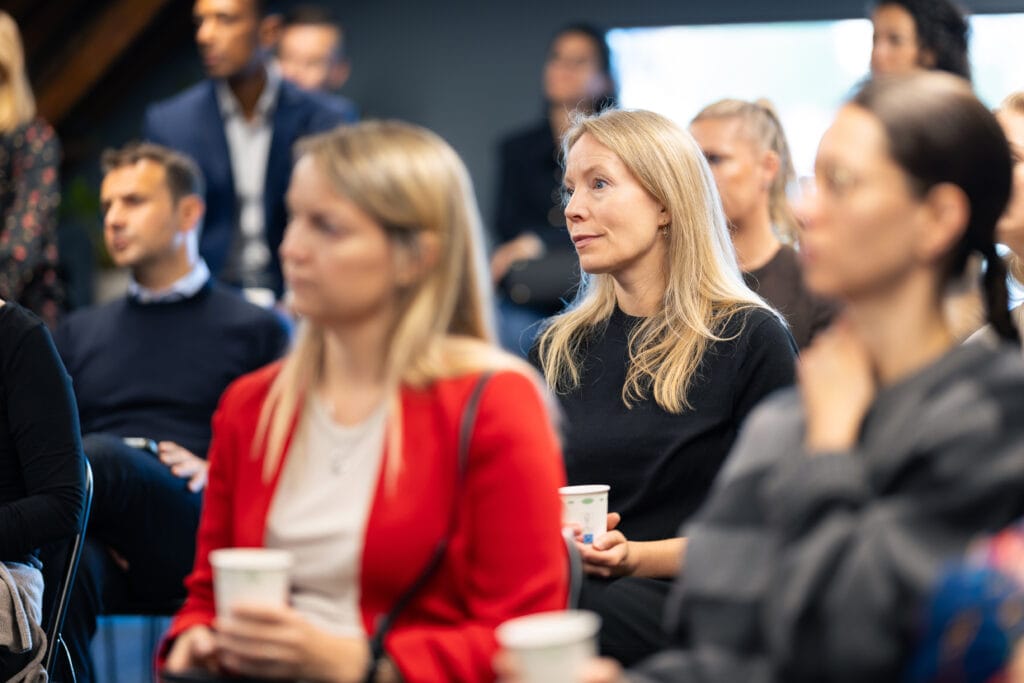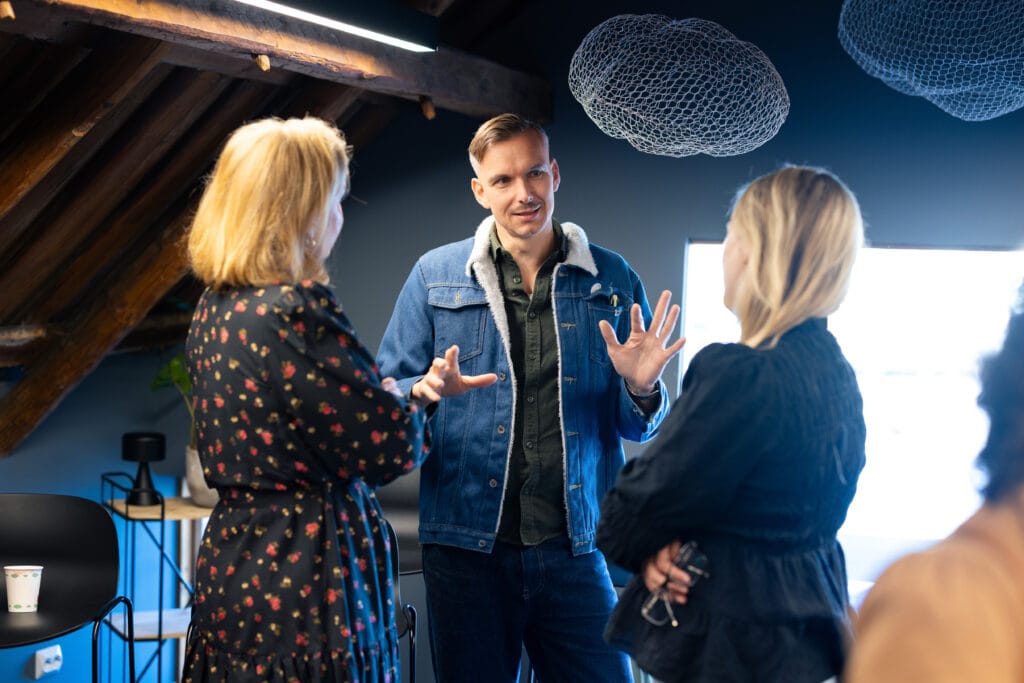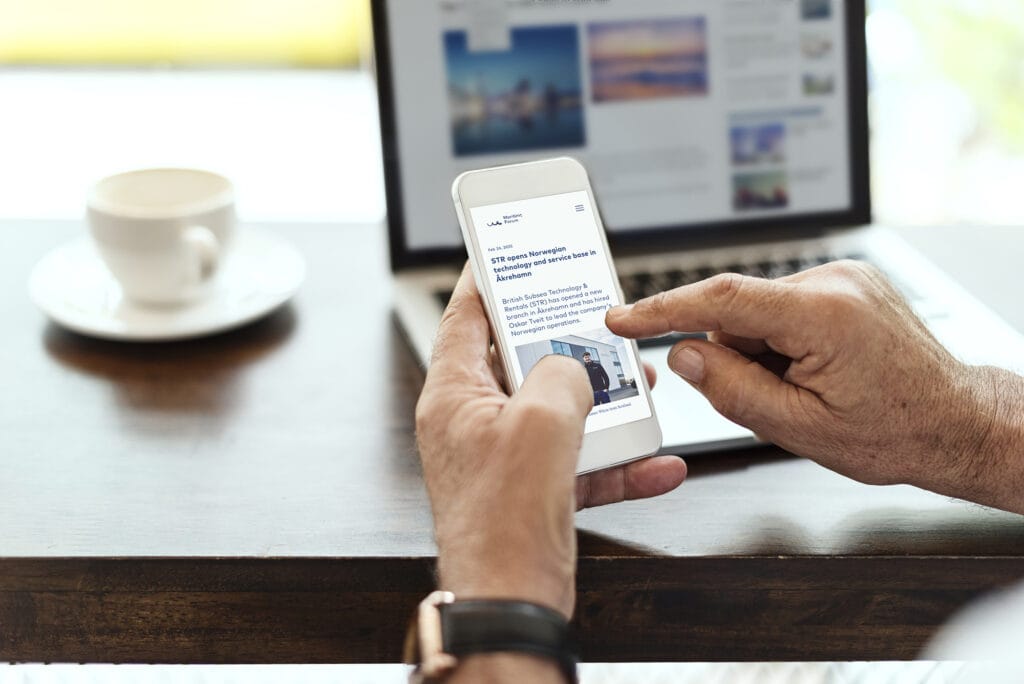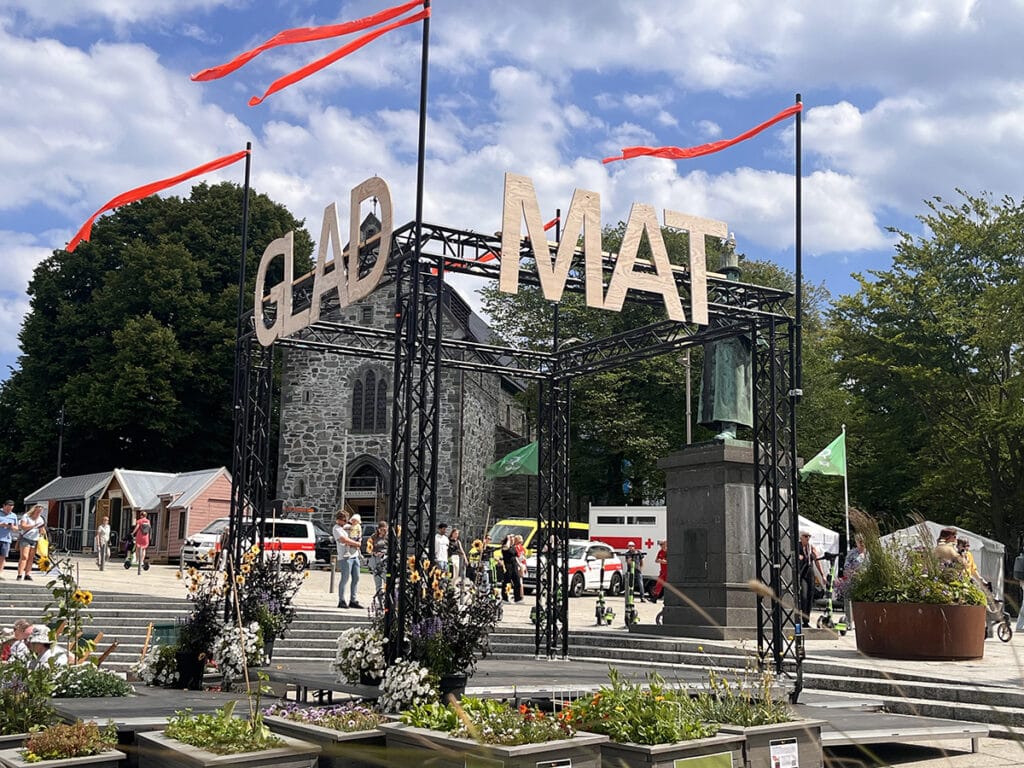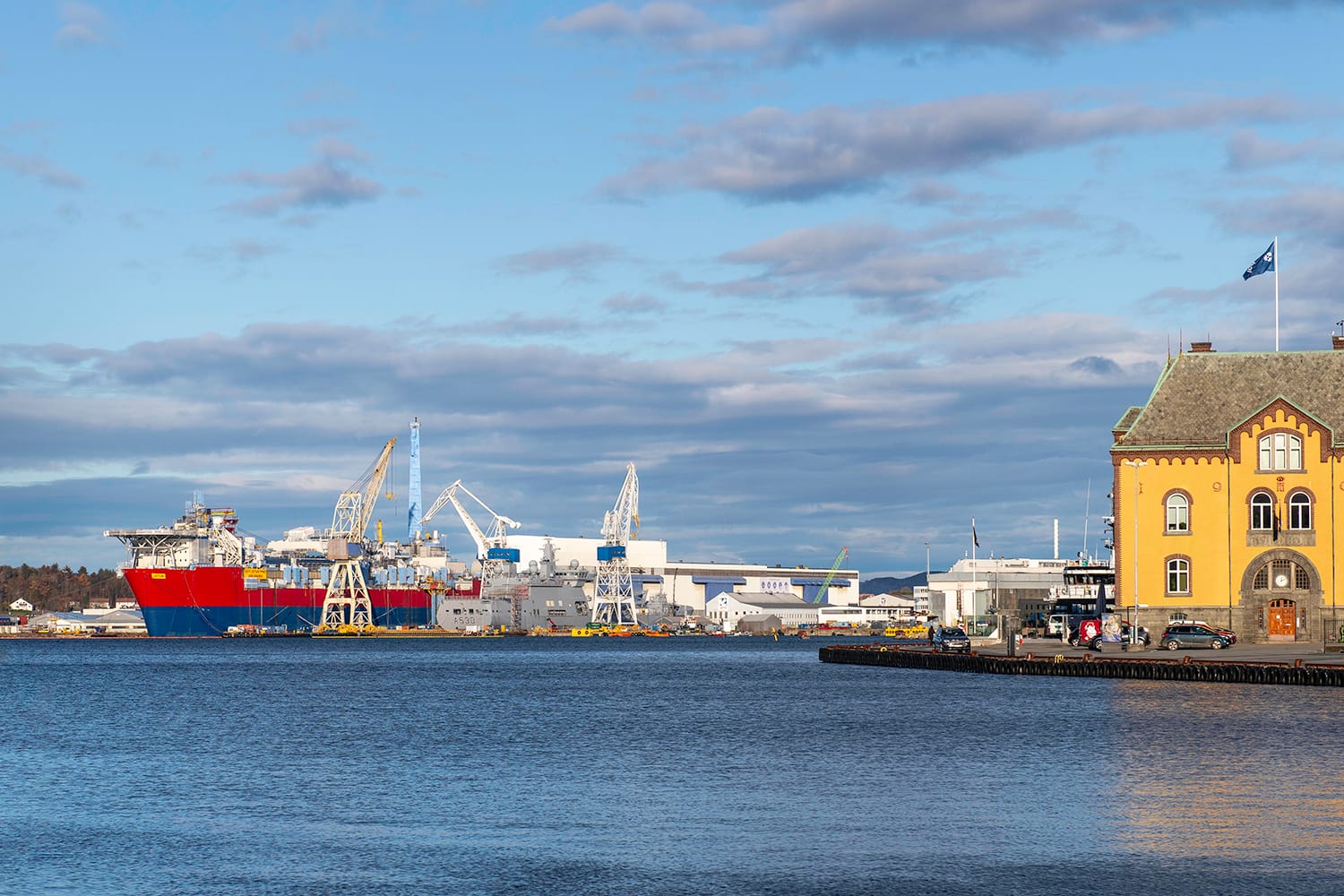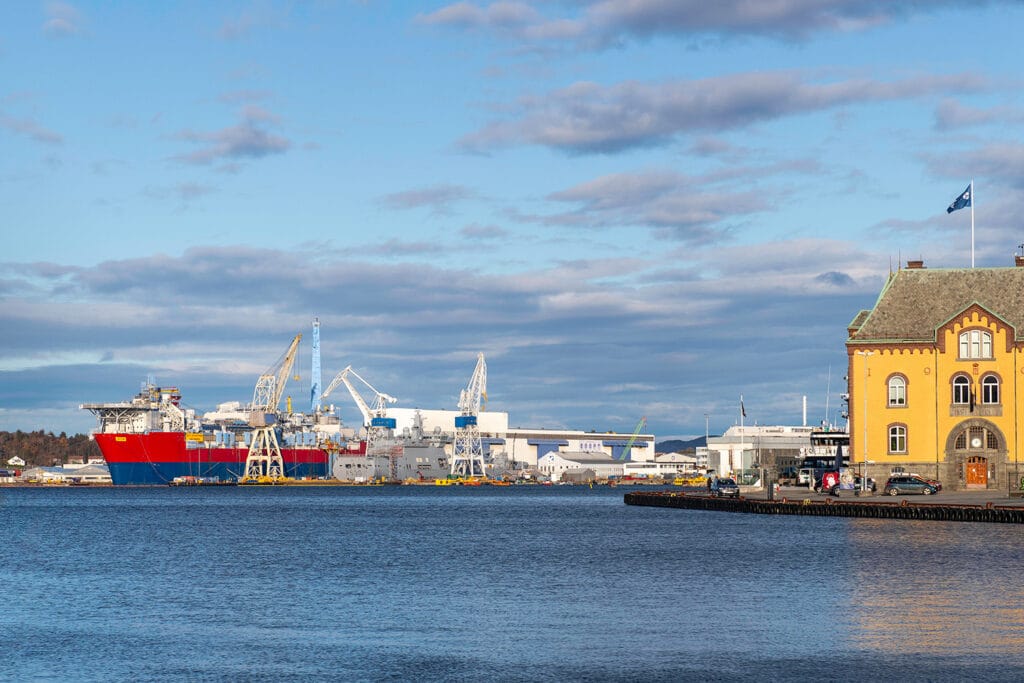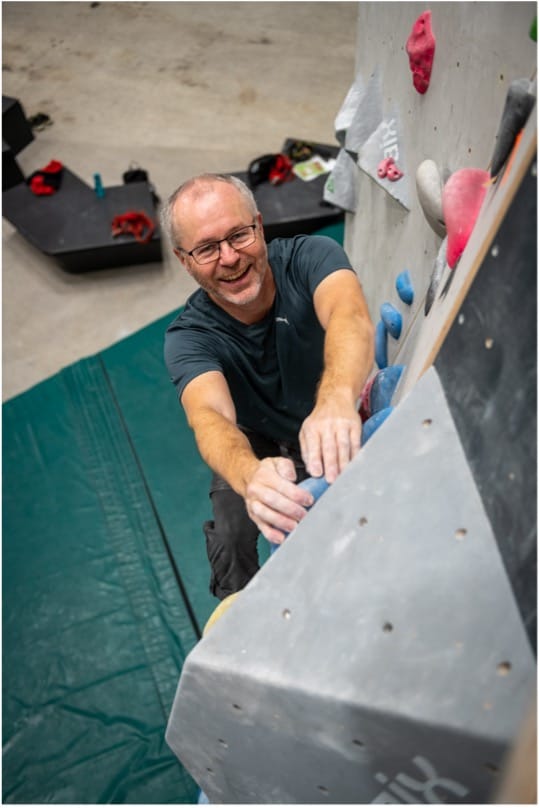Morning Focus with Mari Danielsen Lunde
Who helps you find your way when you step into a new industry or move to a new location? On Tuesday 18th November we opened our office doors, ensured everyone had a a coffee in hand and explored how professional communities can make the “hard to crack” maritime industry feel more open, steerable (pun intended) and human.
Mari Danielsen Lunde, Shipping Operation Manager at Equinor and Board Member of The International Propeller Club of Norway talked about her own experience in this.
Mari brings a career that stretches across energy and shipping, with international projects in Canada and South Korea. Today, she leads Equinor’s Shipping Operations department for oil and product tankers. Outside of work, she is an opera singer (we know, very cool!) and music enthusiast.
This blend of operational responsibility and creativity shaped the tone of the session. Inviting others in the room to join the conversation, the morning became collective exploration of how to best connect and help each other professionally.
What do you think? Are opportunities shaped by proactiveness alone, or do we also need a bit of luck to meet the right people at the right time?
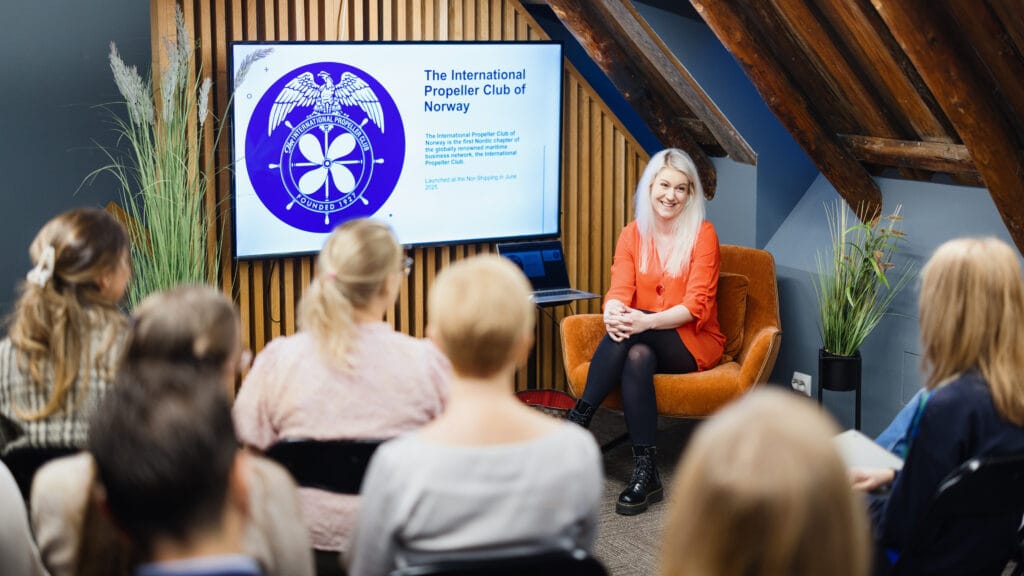
Community as a career catalyst
Mari described shipping as an industry that can feel insular and closed in from the outside. Much of what really matters lives in trust, long-term relationships and informal networks built over time. For people arriving from other sectors or countries, entry into the Norwegian maritime industry can feel more like decoding a culture than applying for a job.
Professional networks, she argued, are one of the most effective ways to bridge that gap. Rather than being purely about “contacts”, they create visible, low-threshold arenas where people can meet on equal terms.
A morning gathering, an evening event or a club meeting can be a first step into conversations that would never happen in a formal interview setting. Over time, these encounters translate into insight into who does what, where decisions are made, and which challenges the industry are grappling with.
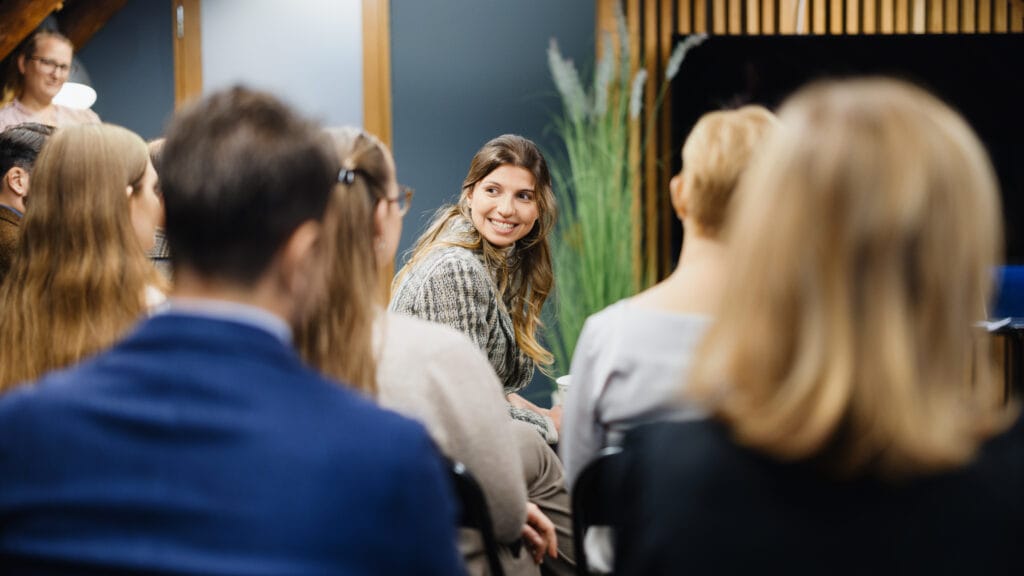
The power of networks
Mari described shipping as an industry that can feel insular and closed in from the outside. Much of what really matters lives in trust, long-term relationships and informal networks built over time. For people arriving from other sectors or countries, entry into the Norwegian maritime industry can feel more like decoding a culture than applying for a job.
This is one of the reasons Mari chose to get involved in The International Propeller Club of Norway. The vision of IPC Norway is to build a network across the maritime sector, not just traditional shipping. That means bringing together people from ship operations, ports, energy, services, finance, law and technology, and giving them a shared arena to share experiences and perspectives.
In the end, what Mari highlighted is something many of us recognise but rarely articulate: careers don’t grow in isolation. They grow through people – the ones who answer questions, open doors, and make a new landscape feel navigable.
In a sector where trust and access shape opportunity, networks help level the playing field, especially for those stepping into something new.
That’s exactly why we’re going to keep creating spaces like Neon Nights and Morning Focus. Places where conversations spark, ideas move, and connections turn into opportunities.
If you haven’t joined us yet, consider this your invitation!
